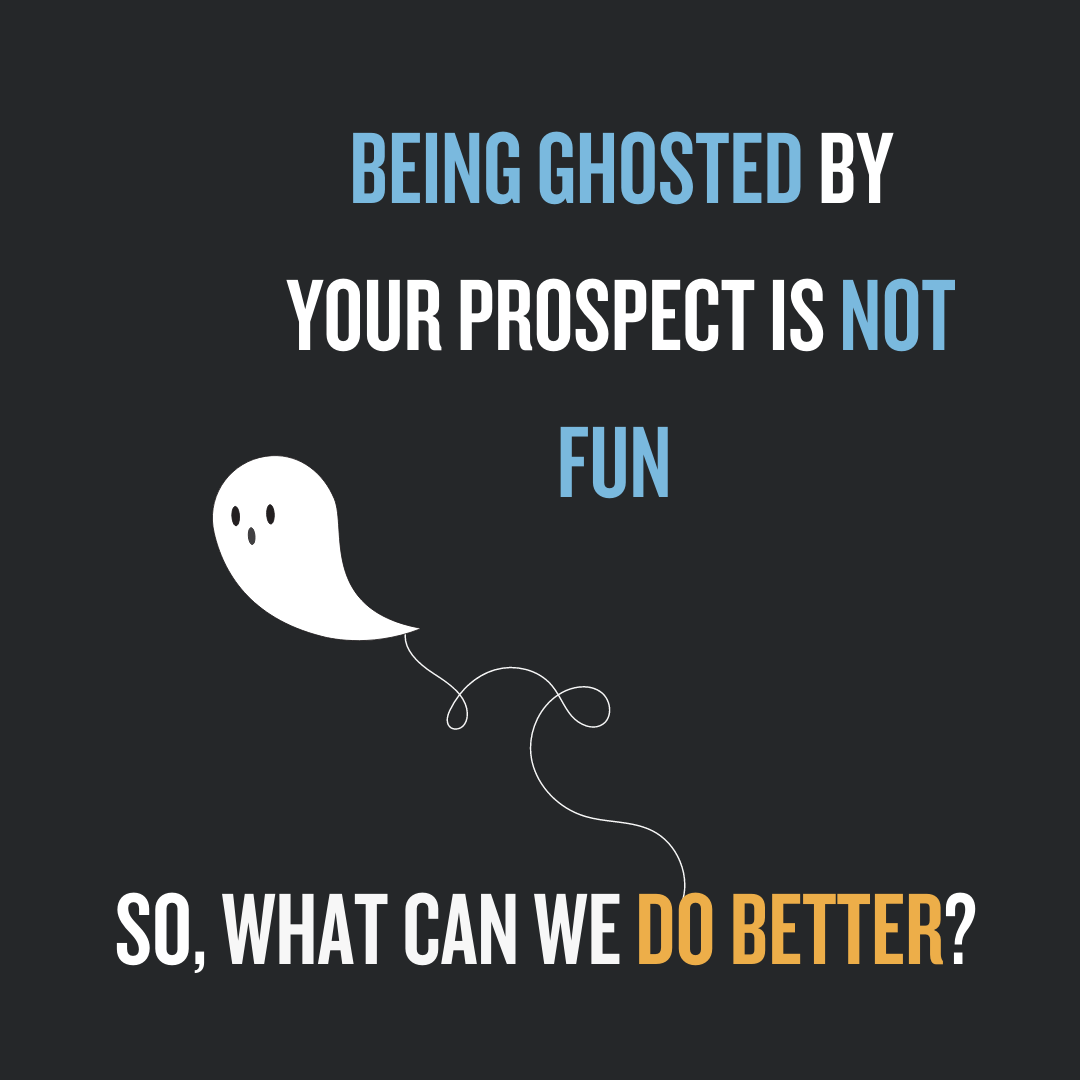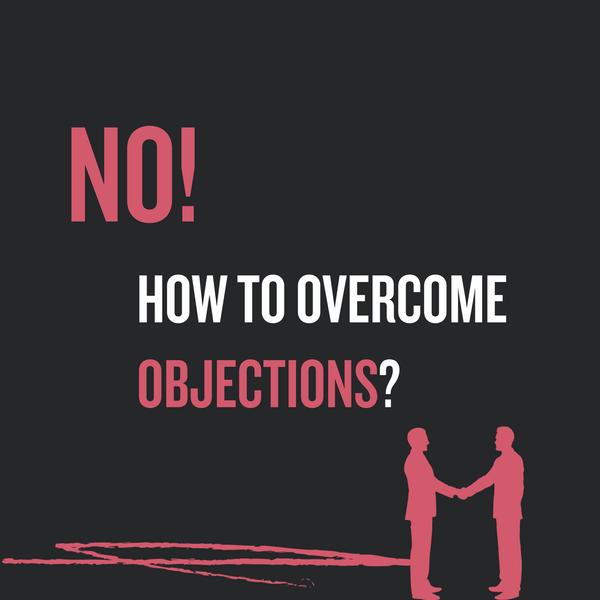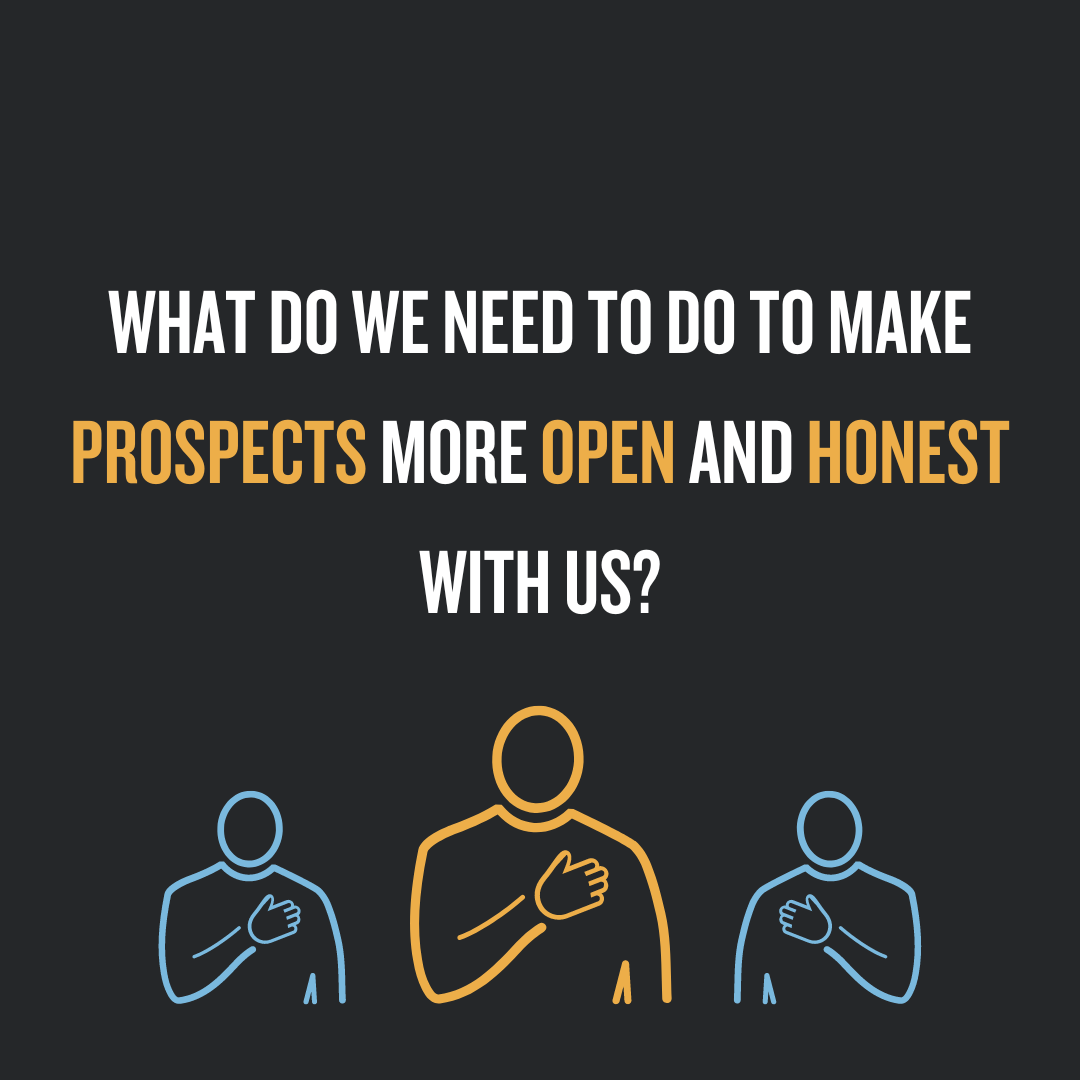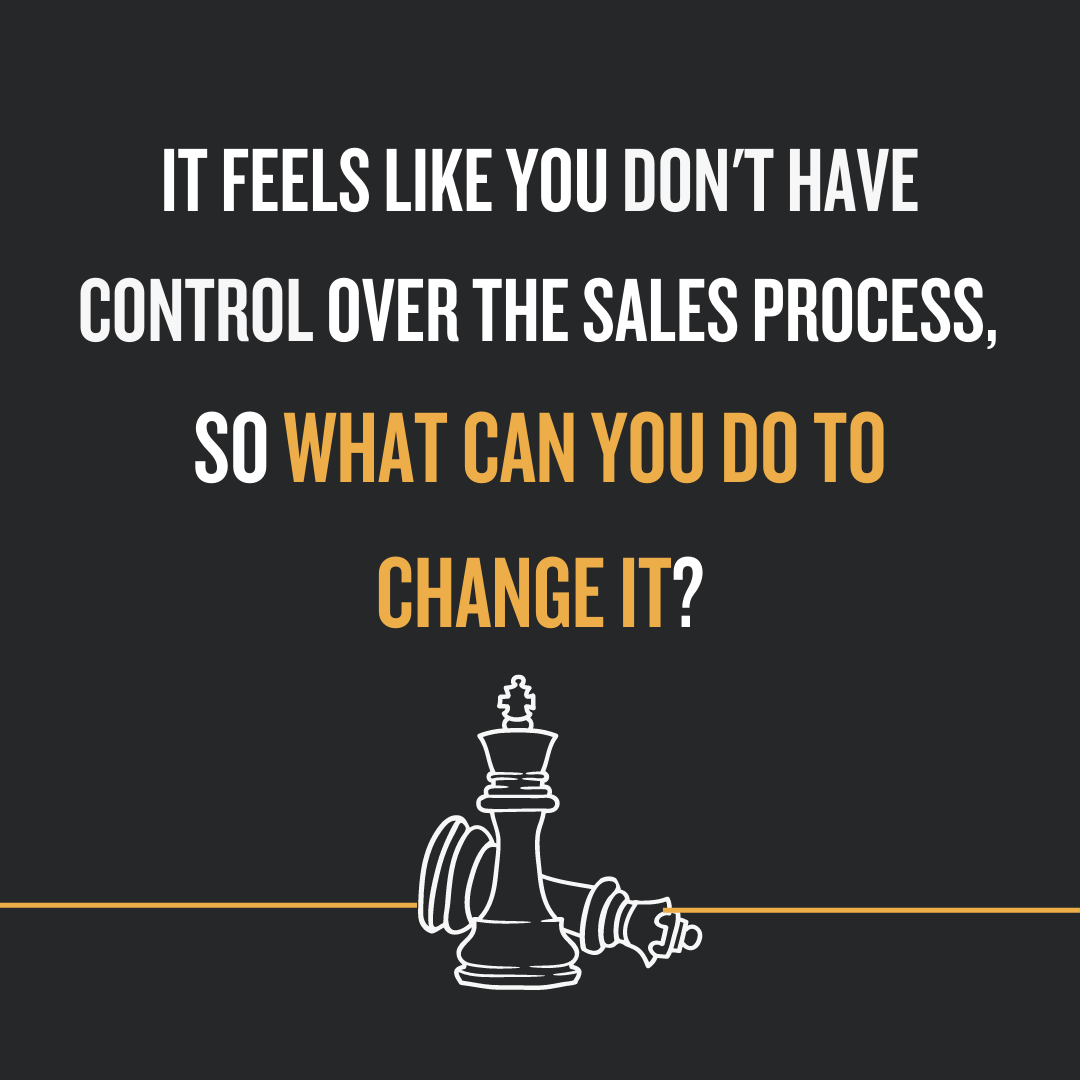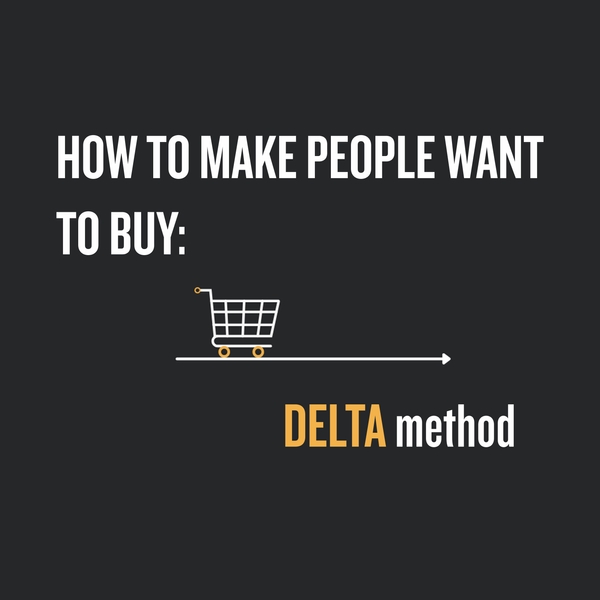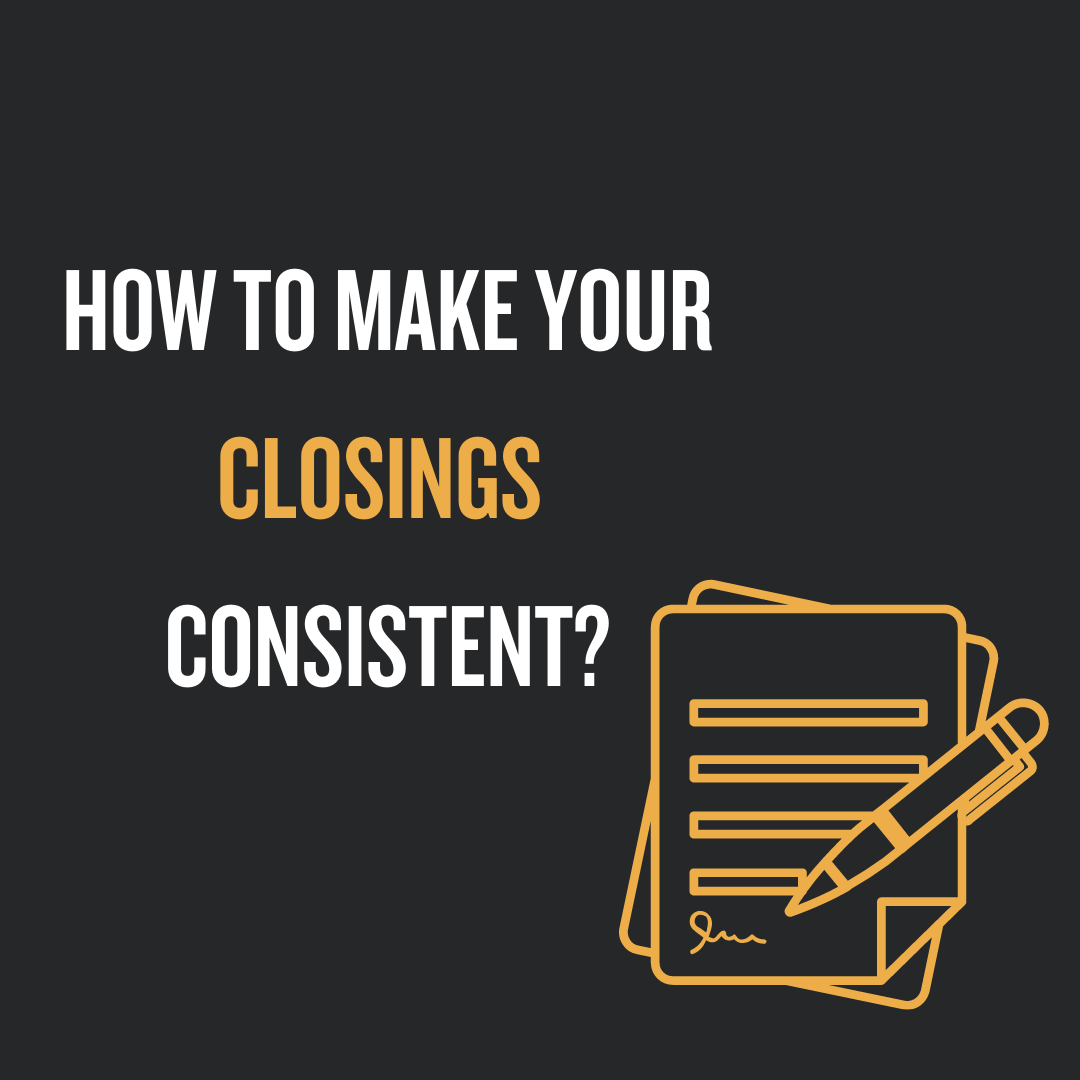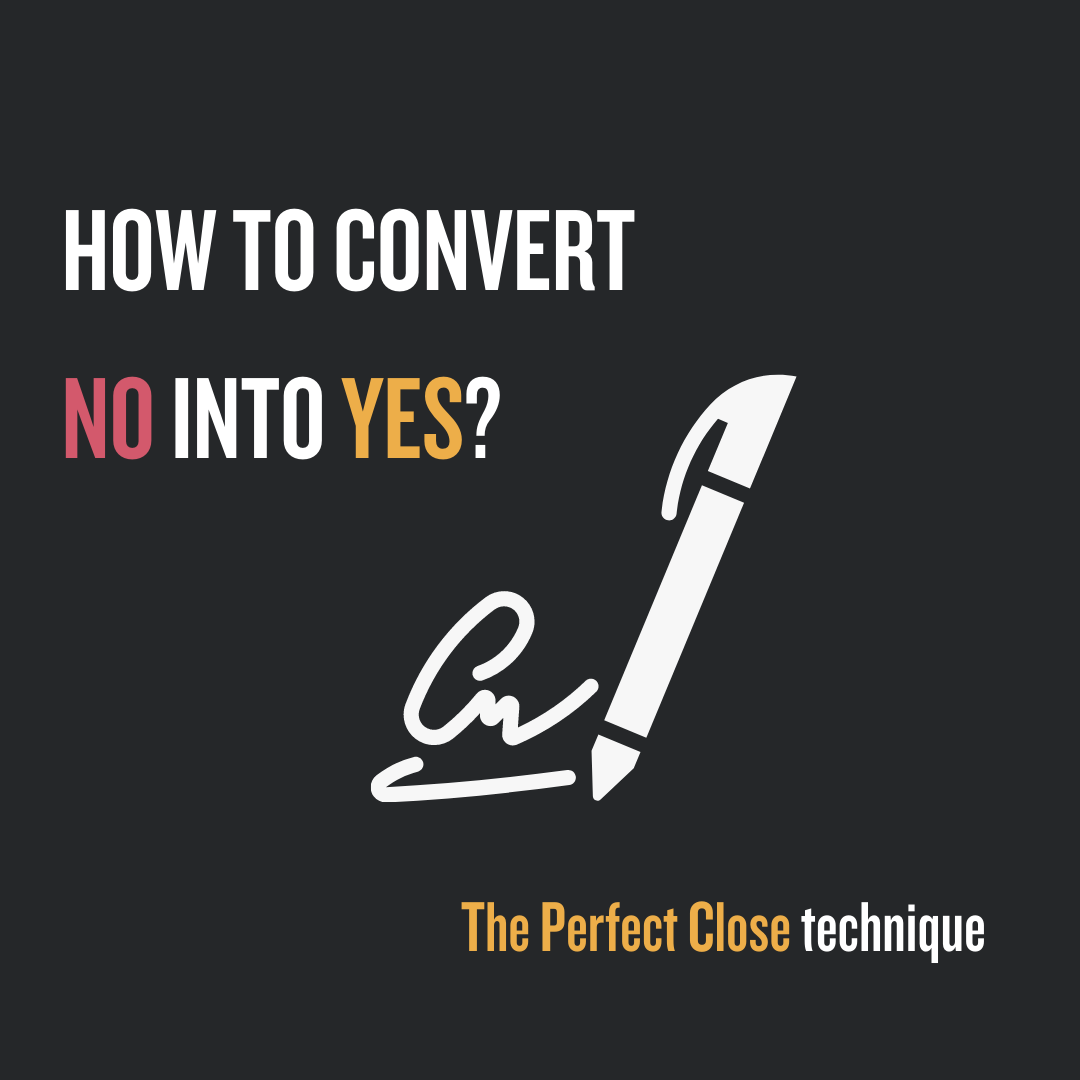In my previous article, I touched upon a cool trick you can do to set and achieve proper objectives for each sales interaction to speed up the closing. As well, I’ve talked about annoying challenges every salesperson faces at some point in their career.
So, in this article, I would like to follow suit and talk more in-depth about another challenge a rep can face - being ghosted by your prospect during the sales process.
There is nothing more annoying than being ghosted. It hurts our process, it hurts our ego and it makes us doubt our abilities to make the sale. So, to avoid this common challenge I'd like to come back to the trick that I mentioned at the beginning of this article.
In the article I mentioned an exercise called Three Magic Pre-Call Questions:
Before every sales encounter— whether in person, by phone, or otherwise— answer the following three questions:
1. Why should this client see me?
2. How can I provide value in this encounter?
3. What do I want the client to do?
In this article, I will touch upon two out of three of these questions. Feel free to check out my other article to learn more about the third question that won’t be discussed here. And you may ask me:
Why only two?
Because the secret behind any successful sales encounter is to make it about the client. The main reason you get ghosts most of the time is that you either:
- Didn’t understand the client.
- Didn't provide enough value.
Or sometimes it’s even both. So, if you want your prospect to come back and not disappear from all radars, you need to make your process better and reconsider the way you’re presenting the value of your help and your product.
This time, we will make this article about YOU, so buckle up, you’re in for a ride!
Worksheets are available to download later below.
Justify by presenting your UVP in the best way possible
Why Should this Client See Me? - This is the first question I’ll answer in this article.
Your value proposition is what makes your offer, well, valuable. It is what makes your offer important to your prospects. You need to be able to explain how you help your clients in a way that they understand. This is important because it shows them why they should meet with you.
But what can be more important than the value proposition itself? Easy: the way you present it.
Your Unique Selling Proposition in a way is an extension of your value proposition. It's what makes you different from other companies in your industry. It's how people will know why they should do business with you, rather than someone else who provides a similar-looking service or product.
We know that a basic value proposition has three core components:
- A Metric
2. A Direction
3. Magnitude
Sometimes people use formal metrics to measure how well they are doing in a certain activity. Formalized metrics for sales might include things like:
- Number of Units Sold
- Close Ratio
- Revenue Growth
- Lead Conversion Ratio
- Number of Opportunities
Examples of formalized Metrics for Accounts Receivable might include:
- Days Sales Outstanding (DSO)
- Percentage of AR over 60 Days
- Average Days Delinquent
- Bad Debt Percentage
- Operating Cost per Transaction
Metrics can be anything from time, money, or counts. They can be less formal than the examples above, but they still exist and other times the metric will be something unique to that customer alone.
The problem here is that you have your metric, but your prospect has its own. So, to make your call successful you need to understand the metric your prospects use to measure their performance.
To do that you can ask the next questions:
- “What tells you when you are doing well in this area?”
- “What tells you if something is going wrong?”
- “What suggests to you that you could be doing better in this area?”
Listen, talking through the customer lens is always the key.
When you use your client's metrics in your value proposition, you are speaking their language and communicating on their level. So, using their terms will increase both your value and your credibility.

But how do you do that organically?
While enhancing the metric you're using, you need to enhance all parts of the formula, and here we'll talk about Direction and Magnitude. To put it simply:
- Direction tells you if something is getting better or worse. For example, we want Sales Revenue to go up and Material Costs to go down.
- Magnitude is how much the metric changes. This could be how much it increased or decreased, by a percentage or a fixed amount. You should also think about what this means for the overall level of improvement.
You need four things to create a good value proposition. The four things can be put in different orders to make it more clear and have more of an impact. Here is an example: Formula: [Magnitude] + [Direction] + [Metric] + [Time]. Example: We increase lead conversion by an average of 47% within two months.
So, you should be able to easily define a business reason to meet with your prospective client now that you have crafted your value proposition. This reason will be your answer to, “Why should this client see me?” Now, construct a complete sentence out of it for your sales encounter.
Question: Why should this client see me?
Answer: This client should see me because with their new expansion it is likely I can reduce their human resource costs by as much as 19% using automation.
Consistently deliver value in every encounter
Many customers now research their options online before talking to a salesperson. They use search engines to find what they are looking for very quickly and the most important information is usually on the first few pages of search results.
Today, buyers can get a good idea of what is available without talking to a salesperson. They can compare options on their own, and find the best one just by browsing the internet. So, if the prospect is looking for the lowest price, they can often find what they want without ever talking to a salesperson.
So buyer now has two options:
- Bypass a salesperson and do business transactional.
- Engage a sales professional to derive value from the sales experience itself.
However, the buyers who choose to work with a sales professional want to receive added value from the sales process. This has raised the bar of what people expect sales professionals to deliver during the sales experience.
1) You are the number one influence.
Studies have been done over the years to figure out what is most important in buying a solution. For example, HR Chally and the Corporate Executive Board (CEB) found that the salesperson is two to four times more important than anything else.
Three main conclusions can be drawn from this data:
- You cannot rely solely on your solution, your brand, or your price. You are the number one influence.
- You have far more control and influence than you may have previously realized. How you sell matters more than anything else.
- This can work for you or against you.
Every experience you have with a potential client must be a good one. If you make every encounter valuable and enjoyable, the prospect will think that the experience after they buy will also be good.
Imagine how much more effective you can be if you plan out each experience carefully and thoughtfully. We can't afford to have any poor experiences during our prospect's sales process.
One of the best ways to provide value is to train your client.
If we always provide value in every encounter, our prospects will see us as more than just agents who offer a given solution. They will see us as valuable experts and advisors they can trust.
When buyers see you in this way:
- They will share more information with you.
- They will ask for advice and accept your recommendations.
- They will refer you to others.
- They will forgive your mistakes.
- They will protect and warn you.
- You will increase your sales both in number and dollar volume.
So, there are two keys to becoming a trusted advisor:
- Value.
- Consistency.
People need to trust you to buy what you are selling. This is why it is important to have a good relationship with your buyers and to seem like you have their best interests at heart.
Prospects also rely on outside sources of information when they are considering a complex solution. This is because they know that they cannot evaluate all the possible options on their own. So, they use shortcuts (like trusting someone else) to help them make a decision.
Let's stop for a second. Try to remember: have you ever lost a sale to a competitor whose offering was inferior?
People can tell how you will solve a problem by how you sell. The time a prospect spends with a salesperson before the sale is an indicator of their experience after the sale.
Every time someone interacts with you, they are sampling what it would be like to have a future experience with you, your company, and your product.
So, how did your competitor that was inferior beat you?
Your prospect's sampling from your competitor may have been exceptional while their sampling of you may have been not as good. This is especially true with more complex solutions because prospects can never really get a good enough sample to understand all the dimensions of each offer. They might make a decision based on a limited experience they had with you.
So how did you lose to an inferior solution? Answer: You were outsold.
One common complaint sellers have is that a prospect stops responding. Often, this happens when the prospect receives the proposal. After that, communication from the prospect mysteriously stops. The primary reason this happens is that the sales agent has not been adding enough value throughout the sales process. As a consequence, once they receive all the information about our solution that they need, they have no reason to continue engaging with us.
The final thing a prospect usually receives from us is the price of our solution. And here they often think that this is the last useful piece of information that we as salespeople can deliver.
But the prospect may be wrong. It's not their fault if we're only providing facts and pricing about our solution. The problem here is that we need to provide additional value to our prospects on every visit.
When people know that every meeting with you is important, they will keep talking to you throughout their decision-making process. They will also continue to talk to you after the sale is over. The key is to make sure both clients and prospects see you as a valuable resource. You can do this by training them to see you as a trusted advisor.
Buyers now place more importance on getting insights from businesses before deciding to work with them. This shift in priorities means that buyers are looking for thought leadership from businesses they partner with.
But what makes a good insight?
- It must be relevant. Your insight should be relevant to your customer.
- It must be novel. The insight you share must provide something new—something that is not already known.
- It must be actionable. The insight you share must be actionable—something they can do something about. If it doesn’t suggest an action they can take, your client won’t find it useful. Ideally, the insight you share will suggest something actionable that relates to the solution you provide.
According to research, buyers are willing to pay more for a solution if they feel that the seller is helping them in some way. For example, if the seller can solve a problem the buyer didn't know they had, or if they see an opportunity that the buyer missed, then the seller can charge more and buyers will be willing to pay.
“Research has shown that buyers will forego price concerns when additional value is delivered by the sales process itself.”
You can use this template for a self-check on the value you're bringing:

2) Practical Tips on Adding Value to Every Encounter
It is easy to say that you should add value to every encounter. However, it can be difficult to know how to do that. Here are some ways that might help.
Each meeting should have at least two purposes:
- A compelling business reason—your answer to “Why should this client see me?”
- A plan to deliver added value.
If you don't have a plan, you are wasting both your time and the buyer's time. When you contact them without a plan, it makes it seem like you don't care if they buy anything or not. It also makes it seem like you're only interested in their money and we don't want to make an impression.
- Be prepared to add value at every stage of the funnel.
There are at least eight different stages that buyers go through when they are making a purchase.
- The first stage is when the buyer is unaware of what they want.
- The second stage is when the buyer becomes aware of what they need or want.
- In stage three, the buyer starts to define the problem they have.
- In stage four, the buyer considers all their options.
- In stage five, the buyer evaluates all their solutions.
- In stage six, the buyer justifies their decision to themselves and
- in stage seven, they make their final selection.
- The eighth and final stage is when they implement their decision.
And knowing which stage your prospect is in will help you give them more value and help them through the buying process.
Consider the context of where your prospect is in their buying process.
For example:
- If they are merely understanding that there is a need for change, you may offer them information about the gap between where they are and where they could be or should be.
- When potential customers become aware of issues that they may face, but which have not yet been crystallized in their thoughts, you may assist them to quantify the potential consequences of their present situation or the benefits of a certain opportunity by defining those difficulties and demonstrating how they can be overcome.
- If they've calculated the potential upside, you could assist them in determining various alternatives or trade-offs to consider to reach their goal.
- If they are considering a few specific solutions, you might help them understand which are best matched to their desired results.
- If they have identified a particular path to achieve their goals, you might help them outline the plan or steps they need to take to reach their goal.
- If they are settled on a particular approach or solution, you might alert them to pitfalls to avoid and suggest ways to reduce risks associated with moving forward.
- If they are at the stage of finalizing their decision, you might share strategies to get executive approval and advise them on the most beneficial business model or terms.
- You may talk about how to take their game to the next logical step if they are planning to implement a certain solution or technique. You might also suggest methods for leveraging their new skills once the new approach is implemented and how to go from strength to strength.
There are infinite ways to add value at any stage of the buying cycle. The point is to be cognizant of where your prospect is, so you can offer the kind of value they will consider the most important at that stage.
- Make Your Agenda Surprisingly Valuable
Your prospective client must think that the meeting with you will be valuable. The focus of the meeting should be what the prospect wants, not what you want.
"But what about this additional value I'm going to be adding?" - this is the question you should ask yourself before the encounter.
When planning your meeting, be aware of these things:
- The agenda should reflect what the other person wants. That is the most important thing. Just make sure you confirm your agenda with them before the meeting.
- You should list what you can offer them on the agenda, but don't say it directly.
You might be wondering if you should explicitly state the value of participating in a meeting. Won't that make the prospect more likely to want to participate?
If we talk about the bonus value we plan to offer right away, it might not have as much of an impact when we offer it during the meeting.
You can use the following sheet to list down all the values you can bring to the meeting with respect to the agenda.

- Deliver Insight.
To add value to your client encounters, you can give them insights. This can be done in many different ways. Here is a list of some ideas in different categories.
1. Prepare Powerful Questions.
There are many different types of questions. The most valuable questions are the ones that help improve somebody's life. When you ask these questions, it helps the person understand better. You should ask these types of questions when you want to know more about somebody, especially if it can help them in some way.
Some questions are more valuable than others. Those are the questions to which the client doesn't already know the answer. They require thought and reflection and the answers to these questions add value to the people involved in the conversation.
2. Stimulate Your Buyer’s Thinking.
There are two dimensions along which your questions stimulate thinking:
-
Knowledge.
-
Cognitive. Your questions help you to think more deeply about the concept. This deep thinking goes from remembering what you learned, understanding it, and thinking about how it applies to you, to analyzing and organizing the information, evaluating it, and then creating your ideas based on the information.
Buyers don't care as much about questions that make them remember or understand concepts. They care more about questions that make them think. When we ask higher-level thinking questions, it adds value.
Asking tough, powerful questions makes you stand out as a consultant and communicates your intent to help. This will add a lot of value to each encounter and set you apart from your competition.
When you ask clients higher-level questions, it forces them to think in a new way. This "Ah-ha" moment is where they see the value in the question.
People are more likely to buy something if they feel like they are in control. Because of this, be careful when you ask them high-level questions. They might not know the answer, and that will make them feel uncomfortable. Instead, wait for them to respond and then you can continue the conversation. Salespeople usually only wait for about one second before asking another question or trying to answer the first one for the client.
Though asking more than 4 high-value questions in a single encounter can make people feel like you are trying to take advantage of them. Your delivery of these questions is important, but I would suggest asking no more than two or three questions at a time.
Here are a few examples:
- As you assemble your evaluation team, how will you determine which priorities will be most heavily weighted?
- As you design what you feel will be the ideal solution, what criteria will you use to evaluate options?
- As you reflect on possible trade-offs or compromises, how will you determine which elements will be the most important?
- During your evaluation, what are the steps you will be going through as a company?
Many experts believe that questions are your most valuable tool. They can help you figure out people's agendas and the dynamics between the people involved in the decision.
The right questions will help you add value to your clients, steer their attention to the most important topics, help them understand new things, and increase their confidence. The questions will also help them articulate their thoughts, remember information better, and get feedback.
3. Help Clients Better Understand Their Needs
When you help your clients understand their own needs, they can better see the path to success. When they know what they need and what the requirements are to meet those needs, they feel more confident in moving forward. This makes it easier for them to see the potential success of a new project, idea, or solution.
When you explain how your product or service can help someone reach their goals, you are adding value. In some cases, this added value can be more than the cost of the product or service itself. This makes you look like a valuable consultant and advisor. Make sure to bring up this extra value in every opportunity you have.
4. Share Customer Success Stories
Ron Baker, the founder of VeraSage Institute and author of Mind Over Matter, says that new ideas represent an area of limitless value. Ideas are more valuable than physically carrying them out. In the business world, ideas can increase innovation and wealth.
Success stories are one of your most powerful tools in the box. In my other series of demo articles, I've talked deeply about success stories and how exactly they can help you in your process, so feel free to check out the article here.
5. Deliver Education
Delivering insights is really about education. Suppose you become a diligent student of best practices in your industry and educate your clients and prospects every time you encounter them. In that case, they will value and anticipate every interaction with you. They will be eager to share their new resource (you) with others, which will help you develop new relationships and opportunities. Consider developing educational sessions either occasionally or regularly.
6. Share News, Trigger Events, and Insights from Their Industry
If you share news, events, or insights from your industry with your prospects, it can add value to your meetings as long as they don't already know about it.
We can train our prospects and clients to see us as valuable resources, domain experts, and trusted advisors who can help them achieve the outcomes they desire by consistently delivering value in every encounter.
Our selling process is a sample of how we solve problems for our clients, and prospects are sampling our value on every encounter. They sum up their experiences with us and extrapolate them into what they think their future experiences will be with both us and the companies we represent.


